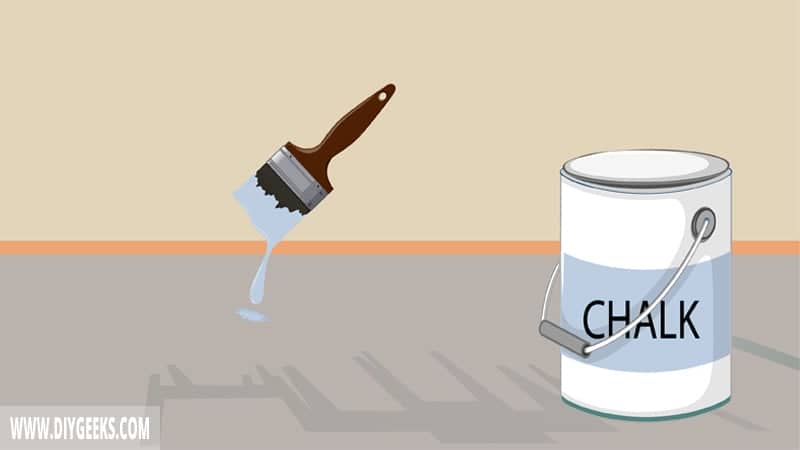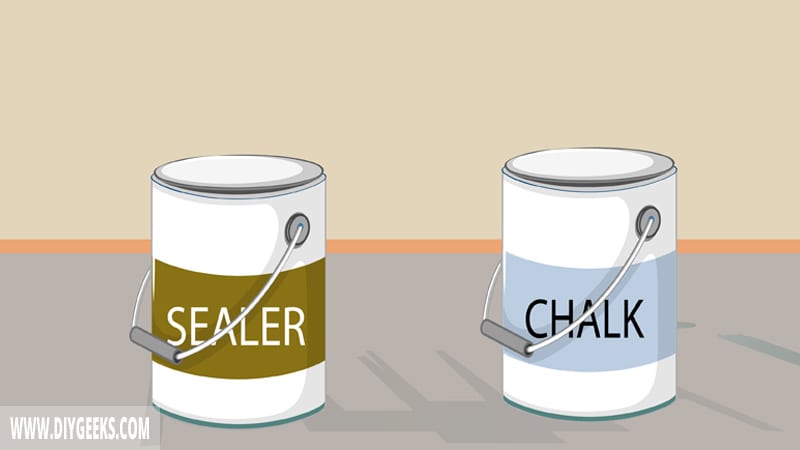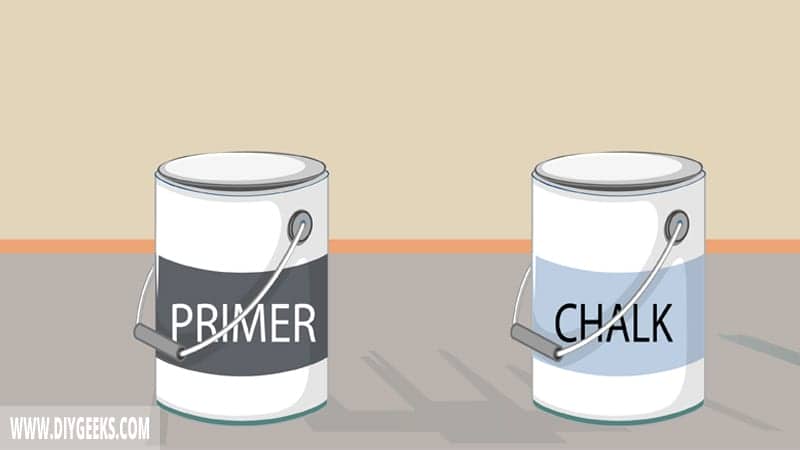Chalk paint doesn’t need a primer undercoat if the surface is clean, sanded, and smooth. However, chalk paint needs a primer if the surface has imperfections, is sealed, non-porous, or slick.
You need to seal chalk paint for outdoor surfaces as the paint isn’t durable enough to protect the surface from moisture, water, or scratches. You don’t need to seal chalk paint for indoor decorative surfaces as they aren’t exposed to constant water, moisture, or handling.
Does Chalk Paint Need a Primer?

Chalk paint doesn’t need a primer if the surface is clean, sanded, and smooth as the paint has good adhesive qualities and adheres to most surfaces.
Chalk paint needs a primer if the surface is rough, stained, sealed, non-porous, slick, or wet as the primer will cover the imperfections on the surface and provide a coating for paint to adhere to.
The purpose of primer is to cover imperfections on the surface, fill surface pores, and produce a smooth coating for the paint to penetrate and adhere to. So, the paint will adhere to the primer and not the surface.
Before applying paint primer, sand the surface to remove heavy imperfections and bumps, and allow the primer and paint to adhere better. If you don’t sand and prime rough surfaces, chalk paint won’t adhere over them or will eventually peel off.
Related Read: Can You Paint Over Chalk Paint?
Can You Use Chalk Paint As a Primer?
You can use chalk paint as a primer (or basecoat) for all paints or sealers on regular and porous surfaces.
Chalk paint is water-based, forms a dry textured finish that enhances paint penetration and adhesion, is made of plasters that improve its adhesive qualities, and comes in white and neutral colors that won’t bleed through. It’s the perfect alternative to paint primer.
You can’t use chalk paint as a primer for non-porous and slick surfaces, such as plastic, as the paint can’t adhere to it without a primer.
What Primer Should You Use For Chalk Paint?
You should use a water-based primer for chalk paint as both use the same solvent (water) and are compatible. You can also use oil-based or shellac-based primer for chalk paint but the adhesion won’t be as good.
Chalk paint doesn’t adhere over sealed or waxed surfaces without a primer. A sealed (or waxed) surface doesn’t allow paint penetration or adhesion. Chalk paint will peel off if you apply it directly over a sealed surface.
To apply chalk paint over a sealed surface, apply shellac-based or oil-based primer first, then apply the chalk paint. The shellac-based or oil-based primer will adhere over the sealed surface and produce a textured coating that paint can penetrate and adhere to.
Use shellac-based primer when applying chalk paint over damped (wet), stained, or damaged surfaces as the primer will prevent moisture and stains from bleeding through the paint coat. Use water-based primer when applying chalk paint over dry and normal surfaces.
Does Chalk Paint Need Sealer?

Chalk paint needs a sealer if you apply it on outdoor surfaces or indoor surfaces that are exposed to constant moisture or handling.
You don’t need to seal chalk paint for low-traffic indoor surfaces, such as picture frames, as the finish won’t be exposed to water, scratches, or handling.
Chalk paint finish isn’t durable or resistant to moisture as it isn’t formulated with protective additives. The formula of chalk paint consists of plasters (or binders), paint solvents (water), and paint pigments.
Unsealed chalk paint finish is water-soluble and will get washed off if exposed to constant water or handling.
A sealer will create a transparent glossy water-resistant coating over chalk paint and protect it from water, moisture, scratches, and handling.
You can seal chalk paint with the following sealers.
- Wax
- Lacquer
- Polyurethane
- Varnish
- Wood glaze
To seal chalk paint, do the following things.
- Wait for the paint to cure.
- Sand the finish with fine-grit sandpaper (220-grit).
- Prepare the sealer.
- Apply 2-3 sealer coats.
- Allow the sealer to dry.
- Once the sealer dries, the finish will be water and moisture-resistant.
Related Read: Can Chalk Paint Be Tinted?
[sc name=”chalk-paint-primer-or-sealer”]



